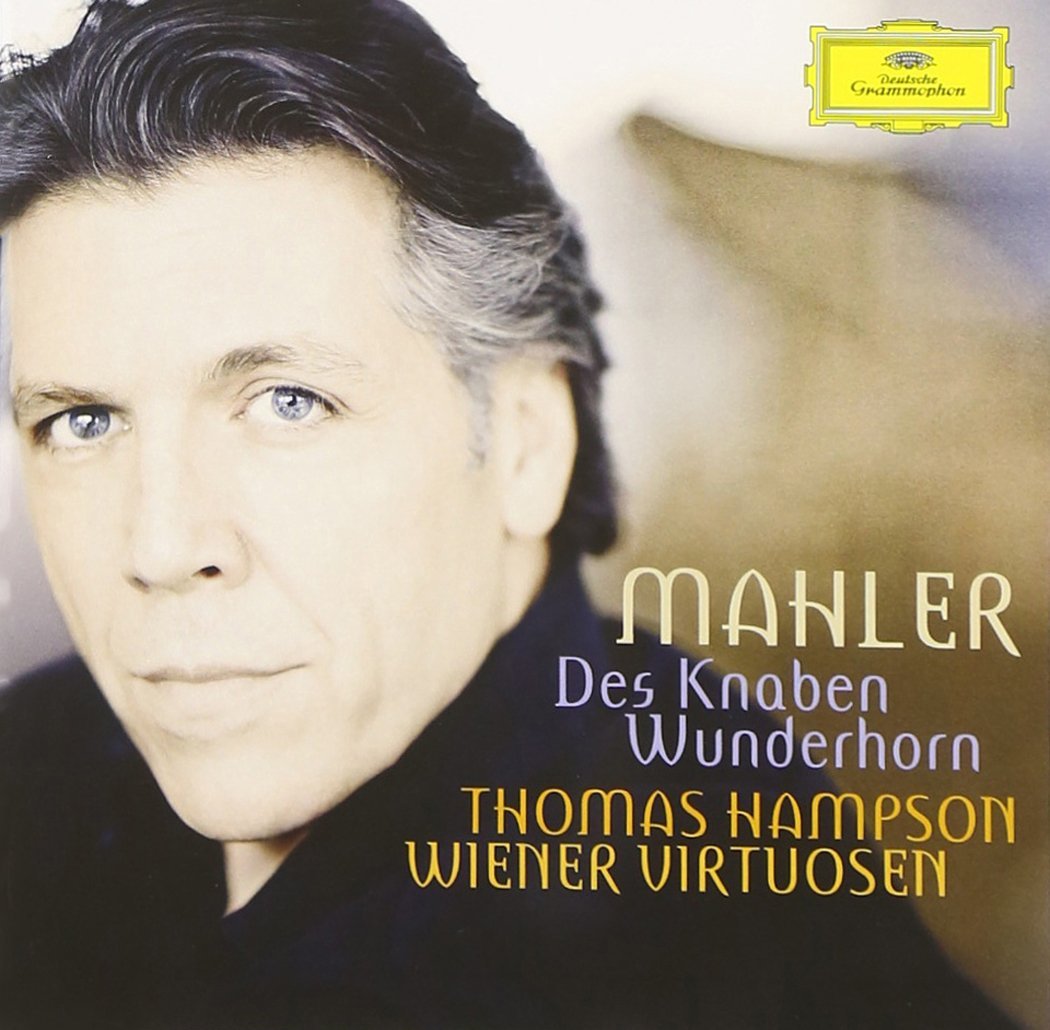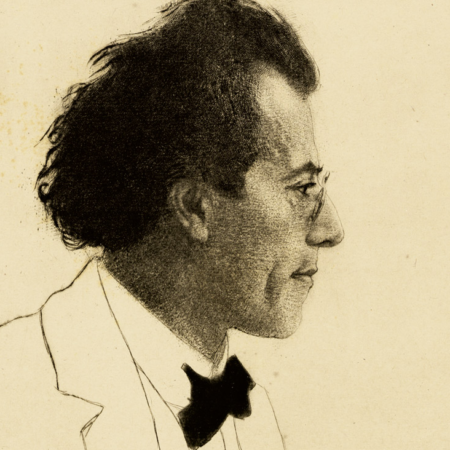Mahler’s “Wunderhorn” World of Sound
Mahler set fourteen poems from Des Knaben Wunderhorn for voice and orchestra over a period of almost ten years, composing them both simultaneously with his symphonies and also during breaks in his work on those symphonies. In doing so, he demonstrated his predilection for certain literary forms, while at the same time breathing life into a musical genre that had previously been relatively uncommon: the balladic and humorous song for voice and orchestra.
Mahler discovered the linguistic basis of his vocal works at a very early date in his life, drawing his inspiration from a source that he claimed had become available to him in book form only after he had written his own words for his Lieder eines fahrenden Gesellen. The book in question was the three-volume collection of “folk songs” that the two Romantic poets Achim von Arnim and Clemens Brentano published between 1805 and 1808 and that enjoyed widespread popularity in the 19th century. At this date, then, Mahler drew exclusively on “old German” literature when casting round for poems to set to music. (“Old German Songs” is Des Knaben Wunderhorn’s original subtitle.)
Mahler’s interventionist approach to the words he set went far beyond anything we normally understand by the term “word-setting” for he regularly rewrote not only individual phrases but even entire passages and verses, often replacing them with words or lines of his own. “These are blocks of rock from which each of us may form something uniquely his own,” he is said to have justified a procedure that sometimes extends to the point where it becomes a montage technique. For him, the Wunderhorn poems were an integral part of his compositional method, allowing him to draft and shape his material at will.
***
It was in 1892, while he was engaged as principal conductor of the Hamburg Opera and of the city’s symphony concerts, that Mahler composed his first five songs for voice and orchestra, all within the space of less than three months. Mahler himself reckoned he had written “ten new songs”, for he always felt that the piano versions and their orchestration were separate compositional processes. He described them as “humoresques for voice, with orchestral accompaniment”, a term intended to cover such disparate works as the two soldiers’ songs, Der Schildwache Nachtlied and Trost im Unglück, two other songs that fall under the heading of dance songs or satirical songs, Verlorne Müh’! and Wer hat dies Liedlein erdacht?!, and the subtle allegory, Das himmlische Leben.
Mahler’s songs for voice and orchestra differ not only in terms of their texts, their musical design and their philosophical meaning, they also suffered disparate fates in respect of their performances and their publishing history. Mahler himself conducted at least one performance of the as yet unpublished Das himmlische Leben in Hamburg in 1893, before substantially revising the orchestration and using it as the final movement of his Fourth Symphony of 1899, where it functions as the work’s motivic and conceptual nucleus.
The fourteen Wunderhorn songs for voice and orchestra comprise humoresques, ballads and grotesque numbers that inhabit different stylistic worlds, so that even during the composer’s own lifetime it proved impossible to group them together as a cycle, quite apart from the fact that they were written over a period of several years. No doubt because they were published as a single collection, the 20th century believed, mistakenly, that the order in which they were printed must be binding. Rather, they fall under four separate headings in terms of their style and content: children’s songs – dance songs – satirical songs; scenes from nature – tales and parables; this world and the next; and the fates of soldiers and other individuals.
During the first decade of the Mahler renaissance (1950–60), a misunderstanding arose that is itself not without a certain humour and that affects the songs for two different characters, resulting in a tradition of performing these songs with two singers in the form of a duet. It is a tradition that should now be laid to rest once and for all. Mahler’s “songs for voice with orchestral accompaniment” are essentially ballads and demand a narrator who both comments on the events from a distance and participates in them emotionally, recreating the necessary moods. As a result, most of these songs, whether written for high or low voice, can be sung indiscriminately by either men or women.
Mahler’s way of thinking and his method of finding an instrumentation for his orchestral songs, as opposed to symphonic movements, is clear from the remarkable fact that he wrote Des Antonius von Padua Fischpredigt as an independent piece while planning a possible second symphony: the fair copy of the orchestral version of this song is dated 1 August 1893, sixteen days after the sketch for what was to become the third movement of his Second Symphony, a sketch that is nonetheless almost complete and which differs in often substantial ways from the song, not least in terms of its incomparably greater dimensions.
In a letter that he wrote to Richard Strauss in 1905, Mahler stressed specifically that his songs for voice and orchestra were meant to be “chamber music” and that if he performed them in Vienna, it was not in the Großer Musikvereinssaal but in the smaller recital room within the same building. It was here that he performed his orchestral lieder on 29 January, with a slightly altered programme on 3 February. True, it is difficult to imagine how the stage of today’s Brahmssaal could have accommodated all the instruments needed in Revelge and Der Schildwache Nachtlied, for example, but we know from the surviving performance material for some of the songs that were performed there that the strings were much reduced in number when compared with the symphonies. It is clear, therefore, that Mahler was keen to create a contrast between the lean-toned, chamber-like textures of the strings and the relatively lavish scoring for the winds and percussion – in ten of the fourteen songs, Mahler demands four horns and in many cases two trumpets as well. In this way the relative weightings of the instruments grouped around the singer achieve an altogether merciless transparency.
Contemporary reviewers were responsive to the tone colours that can be heard in these songs for voice and orchestra. “In terms of its craftsmanship, each of Mahler’s songs is a phenomenal achievement, and there is not a single orchestra, whether it be Wagner’s, Liszt’s or Strauss’s, that sounds like Mahler’s chamber orchestra, which derives its unique character from its screeching muted trumpets, low woodwinds, quietly strident muted horns, rattling tenor drums, thrusting sforzati, rhythmic shifts, nervous energy and the like.” Writing this about Mahler’s concert in Graz on 1 June 1905, Ernst Decsey also spoke of “the secret of the unusual effects” that underpinned Mahler’s orchestration, a secret “that is often nothing but economy of means”. In this way Decsey recognized how essential are balance and translucency to Mahler’s lieder style. The singer is sometimes almost more of a commentator on the events taking place in the orchestra. The present recording follows the New Complete Critical Edition of Mahler’s works and represents an attempt to approach this presumed tonal ideal using chamber resources.
When discussing Revelge – the humoresque he wrote in 1899 –, Mahler insisted that “the rhythm of this song had to be preceded by nothing less than the first movement of my Third Symphony by way of a preliminary study”. In making this claim, he was outlining the importance his lieder had for his thinking as a composer.
© Renate Stark-Voit and Thomas Hampson, 2010
Translation: Stewart Spencer
File Download
Essay from the CD booklet of the 2011 Deutsche Grammophon recording of Gustav Mahler’s Des Knaben Wunderhorn with Thomas Hampson and the Wiener Virtuosen. Copyright 2011 / This project was funded by the Hampsong Foundation.
Mahler’s-Wunderhorn-World-of-Sound (pdf / 96.91 KB)Des Knaben Wunderhorn
Thomas Hampson, baritone
Wiener Virtuosen
Deutsche Grammophon, 2011

